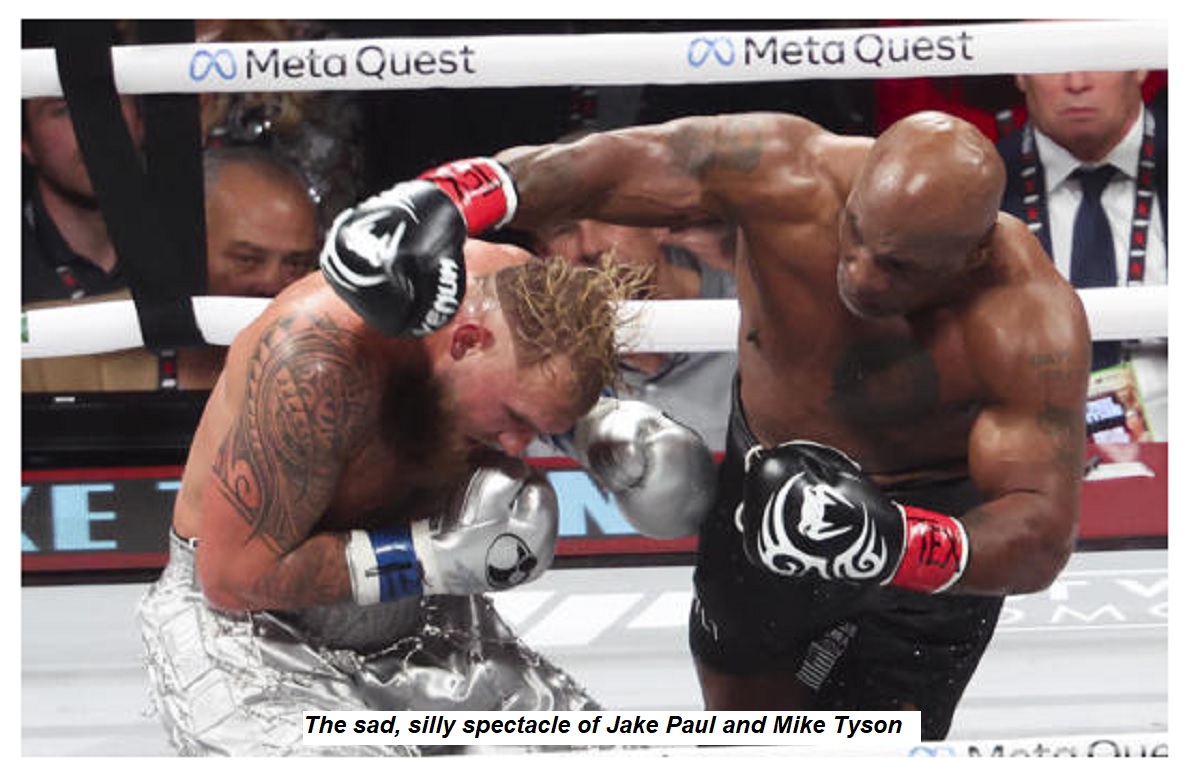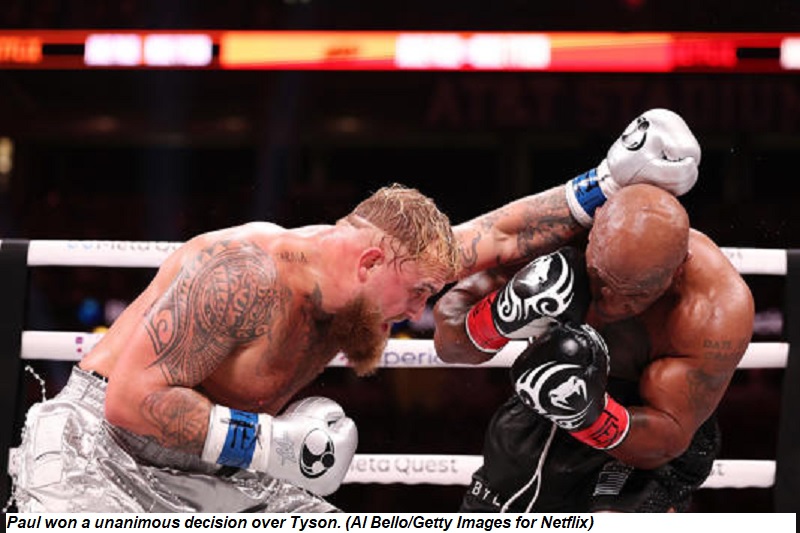Mike Tyson, the youngest heavyweight boxing champion, is renowned for his ferocious power, unmatched skill, and extraordinary journey marked by triumphs and personal challenges.

Mike Tyson vs Jake Paul: The Fight of the Century
Was Jake Paul’s visage not among the most mockingly provocative in pugilistic history? It carried the depth and distinction of processed luncheon meat—bereft of grit, resonance, or substance. It was an influencer’s facade archetype: a curated blend of guile, calculated charisma, and a relentless chase for opulence.
It lacked any semblance of authenticity, let alone resilience, cloaked in a pretense of grandeur with its faux-Egyptian beard and bleached curls—a concoction crying out for Mike Tyson’s weathered fist to lend it a semblance of reality. Such a strike would perhaps force Paul to earn his worth in a career littered with spectacle rather than significance. In one corner of Jerry Jones’s opulent Arlington arena stood Tyson—a 58-year-old emblem of scars, chaos, and raw humanity. Even now, he exuded a faint menace, a vestige of his tumultuous prime.
Mike Tyson’s Comeback: Challenges and Victories
Tyson bore the weight of a past etched in pain—childhood struggles in Brownsville’s harsh tenements, a turbulent rise to the zenith of boxing at 20, and an adulthood marked by addictions, incarceration, and introspection. His autobiography, Undisputed Truth, encapsulates the staggering authenticity of his journey for those brave enough to explore it.
For fleeting moments, Tyson recaptured glimpses of his former ferocity, donning minimalistic black gear and unleashing heavy overhand punches. Yet, the passage of time was evident in his laboring legs, one heavily bandaged, reminding all that his once-peerless power had been tempered by age.
Opposite him stood Jake Paul, a 27-year-old internet personality with a resume defined by spectacle rather than substance. Paul, born in the shadow of Tyson’s infamous ear-biting incident, parlayed his Disney Channel fame into a career fueled by braggadocio and viral stunts. His track, It’s Everyday Bro, celebrated superficial milestones with lines such as, “It’s everyday bro, with the Disney Channel flow, 5 mills on YouTube in six months, never done before.” His quips were shallow reflections of his own constructed reality.

Throughout the prelude to this contrived bout, Paul aggressively marketed the spectacle, declaring his intent to “make $40 million and knock out a legend.” Yet, the reality was a farce. A young, untested performer struggled to convincingly overcome a man twice his age with diminished reach and reflexes. When pressed about his aspirations to face legitimate fighters, Paul dismissed the inquiry with disdain, muttering, “Dumbass.”
Amid this cacophony, only retired boxer Tony Bellew cut through the theatrics, deriding the event with biting commentary. Bellew questioned Paul’s credibility, calling for matchups against competitors more aligned with his ability—or lack thereof.
Tyson’s presence lent an air of gravitas to an otherwise absurd charade. Even in a diminished state, his legacy and resilience stood in stark contrast to Paul’s manufactured bravado. Tyson himself noted Paul’s persona as a fighter was “manufactured,” the product of four years of promotional spin rather than authentic combat experience.
By the time the bell tolled, the about devolved into an anti-climax. Tyson threw fewer than 100 punches, landing 18—a faint echo of his once-devastating precision. Paul, bedecked in ostentatious shorts purportedly encrusted with 380 diamonds, made an exaggerated entrance through plumes of stage smoke. In stark contrast, Tyson’s minimalist approach symbolized his enduring authenticity amid the digital age’s penchant for hyperbole.
The night’s undercard offered genuine drama: a split draw in a WBC welterweight clash and a brutal, riveting rematch between Katie Taylor and Amanda Serrano, punctuated by a staggering exchange of 170 punches in a single round. These matches underscored the theatrical emptiness of Paul versus Tyson—a spectacle devoid of stakes or substance.
In the end, Tyson’s strikes—though rare—were gratifyingly precise, landing flush on Paul’s constructed image. As the audience dispersed, it was evident that the true clash was not in the ring but between authenticity and artifice, legacy and opportunism. Tyson, despite his age and infirmities, embodied the former, while Paul, cloaked in bravado, epitomized the latter.
Trump’s Controversial Second Term: A Cabinet of Loyalists and Radical Agendas
